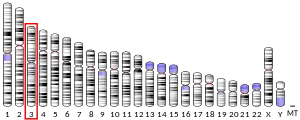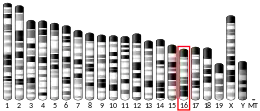| C3orf38 | |||||||||||||||||||||||||||||||||||||||||||||||||||
|---|---|---|---|---|---|---|---|---|---|---|---|---|---|---|---|---|---|---|---|---|---|---|---|---|---|---|---|---|---|---|---|---|---|---|---|---|---|---|---|---|---|---|---|---|---|---|---|---|---|---|---|
| Identifiers | |||||||||||||||||||||||||||||||||||||||||||||||||||
| Aliases | C3orf38, chromosome 3 open reading frame 38 | ||||||||||||||||||||||||||||||||||||||||||||||||||
| External IDs | MGI: 1914859 HomoloGene: 27867 GeneCards: C3orf38 | ||||||||||||||||||||||||||||||||||||||||||||||||||
| |||||||||||||||||||||||||||||||||||||||||||||||||||
| |||||||||||||||||||||||||||||||||||||||||||||||||||
| |||||||||||||||||||||||||||||||||||||||||||||||||||
| |||||||||||||||||||||||||||||||||||||||||||||||||||
| |||||||||||||||||||||||||||||||||||||||||||||||||||
| Wikidata | |||||||||||||||||||||||||||||||||||||||||||||||||||
| |||||||||||||||||||||||||||||||||||||||||||||||||||
Chromosome 3 open reading frame 38 (C3orf38) is a protein which in humans is encoded by the C3orf38 gene.
Gene

The C3orf38 gene is located on chromosome 3 (3p11.1) on the forward strand.[5] It spans 18,771 bases from chr3:88,149,959-88,168,729.[5] It contains 3 exons.[6] Common aliases for this gene are MGC26717, LOC285237, and FLJ54270.[7] Some of the genes neighboring C3orf38 include ZNF654, CGGBP1, and LOC105377202.[8]
Transcripts
| Protein Name | Gene ID | Transcript Accession | Length (nt) | Length (aa) |
|---|---|---|---|---|
| uncharacterized protein C3orf38 | 285237 | NM_173824.4 | 2414 | 329 |
| uncharacterized protein C3orf38 isoform X1 | 285237 | XM_005264745.5 | 2356 | 328 |
Protein
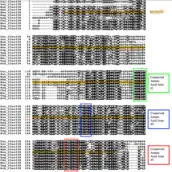
The C3orf38 protein is 329 amino acids in length.[9] A large domain of unknown function, DUF4518, encompasses majority of the C3orf38 protein.[9] This domain is a part of the protein family pfam15008, which is thought to be involved in apoptosis regulation.[10] This pfam15008 is the only member of the cl20886 superfamily.[10] While the C3orf38 protein does not have any abnormal amino acid abundance as a whole, the DUF4518 has a high abundance of histidines and a low abundance of serines, according to compositional analysis.[11] The predicted molecular weight of the entire C3orf38 protein is 37.0 kD and the isoelectric point is 6.01.[12] The DUF4518 contained inside the C3orf38 protein has a predicted molecular weight of 31 kD and an isoelectric point of 6.49.[12]
Regulation
Gene Level Regulation
There have been a number of potential promoters identified for the C3orf38 gene, which are described in the table below.[13]
| Promoter | Start | End | Length (bp) | Transcripts |
|---|---|---|---|---|
| GXP_203118 | 88148634 | 88150046 | 1413 | GXT_23216585, GXT_22791246, GXT_2803824, GXT_26239186 |
| GXP_9795962 | 88148768 | 88149807 | 1040 | no transcript assigned; promoter based on comparative genomics |
| GXP_9795963 | 88148794 | 88150027 | 1234 | no transcript assigned; promoter based on comparative genomics |
| GXP_3194836 | 88149604 | 88150643 | 1040 | GXT_24485561 |
The C3orf38 gene exhibits ubiquitous expression in human tissues.[14]

Protein Level Regulation
The C3orf38 protein is expected to be found with the highest confidence in the cytoplasm.[15] This finding is supported by examination of an array of C3orf38 orthologs.[15]
There are several well conserved post translation modification sites found amongst the human C3orf38 protein and its orthologs, which are depicted in the table below.[16] Majority of these PTMs are PKC phosphorylation sites.[16] Additionally, two confirmed active sites are located in the C3orf38 protein. The first is an aldehyde dehydrogenases glutamic acid active site located from amino acids 1-8.[16] The second site is a eukaryotic thiol (cysteine) proteases histidine active site located from amino acids 227-237.[16]
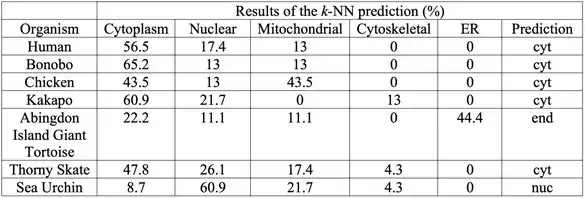
| PTM | Protein Location (aa) |
|---|---|
| Myristyl site | 235-240 |
| PKC phosphorylation site | 34-36 |
| PKC phosphorylation site | 86-88 |
| PKC phosphorylation site | 199-201 |
| PKC phosphorylation site | 265-267 |
Homology/evolution
Orthologs for the C3orf38 protein can be found in mammals, reptiles, birds, amphibians, fish, and invertebrates using BLAST searches.[17] A selection of these orthologs can be found in the ortholog table below. There are no paralogs.[17] Additionally, by comparing sequences of C3orf38 protein with cytochrome C and fibrinogen alpha proteins, a moderate rate of evolution was determined for the C3orf38 protein.
| Genus, species | Common Name | Taxonomic Group | Divergence Date (MYA) | Accession Number | Sequence Length (aa) | Sequence Identity (%) | Sequence Similarity (%) | |
|---|---|---|---|---|---|---|---|---|
| Mammals | Homo sapiens | Human | Primates | 0 | NP_776185.2 | 329 | 100 | 100 |
| Pan paniscus | Bonobo | Primates | 6.7 | XP_003831564.1 | 329 | 99.4 | 99.7 | |
| Puma concolor | Puma | Carnivora | 96 | XP_025769652.1 | 348 | 79.8 | 86.6 | |
| Reptiles | Mauremys reevesii | Reeve's Turtle | Testudines | 312 | XP_039379932.1 | 315 | 55.7 | 70.5 |
| Chelonoidis abingdonii | Abingdon Island Giant Tortoise | Testudines | 312 | XP_032650981.1 | 304 | 55.4 | 69.9 | |
| Birds | Strigops habroptila | Kakapo | Psittaciformes | 312 | XP_030327387.1 | 309 | 52.1 | 66.3 |
| Taeniopygia guttata | Zebra Finch | Passeriformes | 312 | XP_002190058.5 | 306 | 51 | 63.9 | |
| Gallus gallus | Chicken | Galliformes | 312 | XP_004938363.2 | 312 | 44.2 | 59.9 | |
| Amphibians | Rhinatrema bivittatum | Two-Lined Caecilian | Gymnophiona | 351.8 | XP_029434832.1 | 289 | 49.7 | 64.5 |
| Bufo bufo | Common Toad | Anura | 351.8 | XP_040279187.1 | 289 | 43.9 | 62.1 | |
| Xenopus tropicalis | Tropical Clawed Frog | Anura | 351.8 | XP_017946806.1 | 261 | 38.6 | 54.8 | |
| Fish | Chelmon rostratus | Copperband Butterflyfish | Perciformes | 435 | XP_041807133.1 | 302 | 42.7 | 58.2 |
| Coregonus clupeaformis | Lake Whitefish | Salmoniformes | 435 | XP_041700482.1 | 308 | 42.4 | 60.6 | |
| Carcharodon carcharias | Great White Shark | Lamniformes | 473 | XP_041066710.1 | 308 | 45 | 59.8 | |
| Amblyraja radiata | Thorny Skate | Rajiformes | 473 | XP_032888490.1 | 382 | 32.5 | 46.5 | |
| Invertebrates | Lytechinus variegatus | Sea Urchin | Temnopleuroida | 684 | XP_041465399.1 | 312 | 36.4 | 48.3 |
| Patiria miniata | Bat Star | Valvatida | 684 | XP_038067113.1 | 294 | 34.1 | 46.2 | |
| Cryptotermes secundus | Termite | Blattodea | 797 | XP_023724689.1 | 296 | 30.1 | 48 | |
| Crassostrea virginica | Eastern Oyster | Ostreidae | 797 | XP_022335568.1 | 340 | 29.6 | 46.5 | |
| Diabrotica virgifera | Western Corn Rootworm | Coleoptera | 797 | XP_028133096.1 | 284 | 26.9 | 43.6 | |
| Acropora millepora | Branching Stony Coral | Scleractinia | 824 | XP_029194133.1 | 288 | 32.6 | 50.9 |
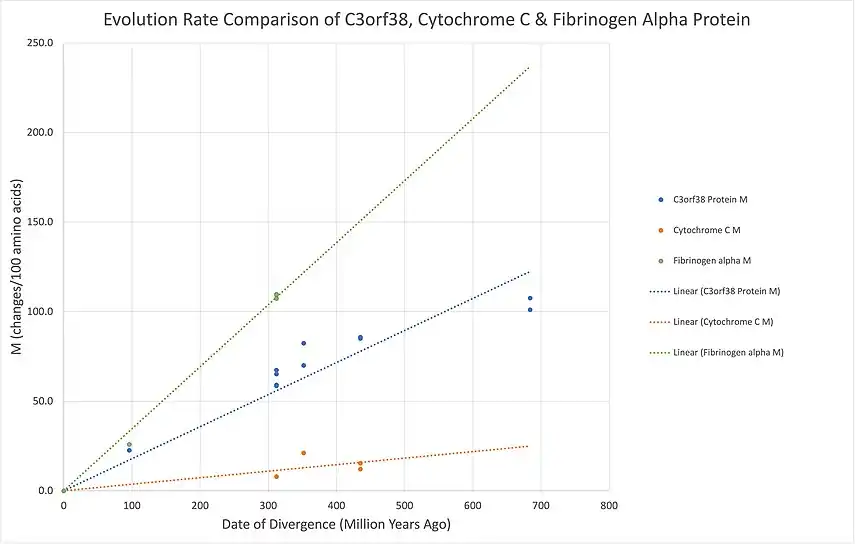
Function
Although investigation into the function of the C3orf38 gene is ongoing, a couple studies have granted valuable insights into its role. One study has identified C3orf38 as a candidate proapoptotic gene.[20] Another study identified C3orf38 as a top candidate tumor suppressor gene (TSG).[21]
Interacting proteins
Of the various proteins C3orf38 protein interacts with, two are particularly interesting seeing as C3orf38 is a candidate proapoptotic and tumor suppressor gene. First, BAG family molecular chaperone regulator 4 (BAG4) is an anti-apoptotic protein that is known to interact with a number of apoptosis and growth-related proteins.[22] Second, DnaJ Heat Shock Protein Family Member B4 (DNAJB4) is a member of the heat shock protein-40 family (Hsp40), a molecular chaperone, and a tumor suppressor (specifically for colorectal carcinoma).[23]
References
- 1 2 3 GRCh38: Ensembl release 89: ENSG00000179021 - Ensembl, May 2017
- 1 2 3 GRCm38: Ensembl release 89: ENSMUSG00000059920 - Ensembl, May 2017
- ↑ "Human PubMed Reference:". National Center for Biotechnology Information, U.S. National Library of Medicine.
- ↑ "Mouse PubMed Reference:". National Center for Biotechnology Information, U.S. National Library of Medicine.
- 1 2 3 "C3orf38". www.genecards.org. Archived from the original on 2011-11-29. Retrieved 2021-09-30.
- ↑ "Homo sapiens chromosome 3 open reading frame 38 (C3orf38), mRNA". 2021-04-16.
{{cite journal}}: Cite journal requires|journal=(help) - ↑ "AceView: Gene:C3orf38, a comprehensive annotation of human, mouse and worm genes with mRNAs or ESTsAceView". www.ncbi.nlm.nih.gov. Retrieved 2021-09-30.
- ↑ "C3orf38 chromosome 3 open reading frame 38 [Homo sapiens (human)] - Gene - NCBI". www.ncbi.nlm.nih.gov. Retrieved 2021-12-17.
- 1 2 "uncharacterized protein C3orf38 [Homo sapiens] - Protein - NCBI". www.ncbi.nlm.nih.gov. Retrieved 2021-09-30.
- 1 2 "CDD Conserved Protein Domain Family: DUF4518". www.ncbi.nlm.nih.gov. Retrieved 2021-12-17.
- ↑ "SAPS < Sequence Statistics < EMBL-EBI". www.ebi.ac.uk. Retrieved 2021-12-17.
- 1 2 "ExPASy - Compute pI/Mw tool". web.expasy.org. Retrieved 2021-12-17.
- 1 2 "Genomatix Software Suite". Archived from the original on 2012-01-14.
- 1 2 "2928464 - GEO Profiles - NCBI". www.ncbi.nlm.nih.gov. Retrieved 2021-12-18.
- 1 2 3 "PSORT II Prediction". psort.hgc.jp. Retrieved 2021-12-18.
- 1 2 3 4 "Motif Scan". myhits.sib.swiss. Retrieved 2021-12-18.
- 1 2 3 "Protein BLAST: search protein databases using a protein query". blast.ncbi.nlm.nih.gov. Retrieved 2021-12-17.
- ↑ "EMBOSS Needle < Pairwise Sequence Alignment < EMBL-EBI". www.ebi.ac.uk. Retrieved 2021-12-17.
- ↑ "TimeTree :: The Timescale of Life". timetree.org. Retrieved 2021-12-17.
- ↑ Park, Kyung Mi; Kang, Eunju; Jeon, Yeo-Jin; Kim, Nayoung; Kim, Nam-Soon; Yoo, Hyang-Sook; Yeom, Young Il; Kim, Soo Jung (2007-04-30). "Identification of novel regulators of apoptosis using a high-throughput cell-based screen". Molecules and Cells. 23 (2): 170–174. ISSN 1016-8478. PMID 17464193.
- ↑ Cody, Neal A. L.; Shen, Zhen; Ripeau, Jean-Sebastien; Provencher, Diane M.; Mes-Masson, Anne-Marie; Chevrette, Mario; Tonin, Patricia N. (2009). "Characterization of the 3p12.3-pcen region associated with tumor suppression in a novel ovarian cancer cell line model genetically modified by chromosome 3 fragment transfer". Molecular Carcinogenesis. 48 (12): 1077–1092. doi:10.1002/mc.20535. ISSN 1098-2744. PMID 19347865. S2CID 10259832.
- ↑ "BAG4". www.genecards.org. Archived from the original on 2011-11-27. Retrieved 2021-12-18.
- ↑ "DNAJB4". www.genecards.org. Archived from the original on 2021-12-18. Retrieved 2021-12-18.
